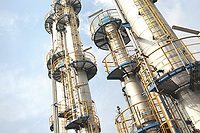ICI Paints Implements Content Management System in Global Web Overhaul

As a leading international paint business, with well-established brands such as Dulux, Glidden, Valentine, Coral, Alba and Color Your World, ICI Paints manufactures in 26 countries and sells in over 100 countries worldwide. But as our Web presence grew over time, we realized that we could improve efficiency by introducing common standards, processes, applications, infrastructure and services. To that end, we decided in 2002 to rollout an enterprise-wide overhaul of our website strategy called the Web Computing Environment (WCE) initiative. This involved migration of existing sites to a new, hosted environment based in the UK, as well as a substantial ¿re-architecting¿ of Web applications, using the IBM WebSphere product line and a new Content Management System (CMS).
The idea was to develop a core technology solution that all the ICI Paints divisions could share, one that would enable us to save on development costs, while giving each local business group the flexibility to make their own choices, from the simplest Web content to complex B2B capabilities.
Within that core, we saw the new CMS as a key enterprise software platform, essential to reaching our goal of taking IT staff out of the content production loop and shifting control of content to our business users. Other requirements for the CMS included the ability to scale our Web architecture over time, implementation speed, overall cost and support for industry standards. After an extensive vendor review, we selected the Rhythmyx Enterprise Content Management solution from Percussion Software.

A Global Challenge
Getting ICI Paints¿ global Web Computing Environment up and running was a complex challenge, which we defined as a joint IT and business responsibility. Our CTO, Nick Rawlings, provided architectural leadership, and as the Business Information Manager for International Marketing, I managed the project. Together, our cross-functional team developed guidelines and adopted a modular approach to embracing new technologies -- an approach designed to allow each technology to do what it does best.This modular approach enabled us to select the best hardware, database and software platform for the job. We adopted the IBM WebSphere product line for application and Web serving, and paired it with Rhythmyx to implement our preferred publishing model, which keeps the CMS out of the global run time environment.
This was a simple and effective solution because of the Rhythmyx De-Coupled Delivery Architecture, which separates content production from delivery. Rhythmyx boosts content delivery performance across our modular global configuration. It enables us to scale our delivery architecture as needed, without having to purchase incremental CMS licenses for each new target server. And since the CMS is separate from the runtime environment, it eliminates the CMS as a potential single point of failure.
Percussion Summit for Face-to-Face Planning
To handle such a large global effort, we decided to implement our WCE initiative by outsourcing development to a different systems integrator in each region -- Europe, North America, Latin America and Asia/Pacific. Having multiple teams working simultaneously enabled us to meet the tight time frame for delivery of the first group of refitted websites -- the 90 days between September 2002 and January 2003 -- but it also meant that significant coordination was necessary among the various organizations.Percussion Software helped the process along by hosting a planning summit designed to ensure that ICI Paints¿ business requirements would be met in the Rhythmyx implementation. Topics included how the CMS would fit into our overall WCE architecture, how the Rhythmyx server would be used to share content among our four operating regions, establishing naming conventions, exploring implementation approaches, multi-lingual issues and more.
Percussion¿s five-day planning summit was a key event in the delivery of the project. It was the first time we were able to bring together ICI¿s key technical and business stakeholders, systems integrators and the Percussion architectural team -- all working face-to-face. This gave the various players a firm foundation as they began a very aggressive development schedule.
Evolution of a Global Solution
When we began the WCE process, our legacy environment included multiple development platforms, different standards used in different regions and a sheaf of applications based on Perl, Java, Coldfusion and flat HTML. To shape our Web presence for the future, we based the WCE solution on common global processes, standard applications and shared infrastructure and services. The regional systems integrators began the development effort with Java coding, testing and QA, then moved on to Web-based interface testing, file and data configuration, and finally, migration of each refitted website into the live environment.
Our legacy environment also included some existing content management capabilities in the form of a rudimentary CMS from a small software house that focused predominantly on capturing and updating data. This outdated CMS required a technician to implement changes, and had no workflow, revision tracking, roll back or automatic publishing. Development was costly, and poor delivery performance meant that we needed a new caching mechanism. It was clear that the legacy CMS was unsuitable for our business users, and we needed to get the Rhythmyx solution in place.
Rhythmyx: An Ideal Fit
As noted, Rhythmyx is ideally suited for our global environment because it is an open, standards-based solution based in XML/XSL, Java and other international standards that integrated easily into our modular, global architecture. Rhythmyx provides the power and flexibility to serve content cost-effectively through multiple channels to all of ICI Paints¿ business audiences. It has enabled us to minimize content management implementation costs, as well as licensing and ongoing maintenance costs, to yield a very affordable Total Cost of Ownership (TCO).Also of key importance, Rhythmyx is helping us to move control and ownership of websites into the heart of our business. It simplifies content creation by business users, who can:
- Contribute content without coding through the use of Rhythmyx forms and templates;
- Assemble and preview Web pages through Rhythmyx¿s unique Active Assembly for Pages, a graphical interface that allows users to easily rearrange and reuse content; and
- Facilitate continuous content changes.
We¿re now developing a set of best practices for using Rhythmyx and training business users worldwide. We¿ve targeted the CMS for the most obvious websites first -- based on the complexity of the site, and the speed and frequency of content changes a site requires. By the end of June 2003, sixteen of ICI Paints¿ 50 worldwide websites relied on Rhythmyx for content management.
Future Directions
At ICI Paints, our objectives now are to maximize use of Rhythmyx throughout the business and exploit more CMS features, such as grouping business users into Rhythmyx communities, as use becomes more widespread.We¿ll also leverage Rhythmyx¿s globalization features to more easily support multiple languages. But I want to emphasize that each region will control the process to best meet local needs. We aren¿t creating a model like Coca Cola that gets translated as is across the globe. Our idea is to give the regions autonomy to develop their own solutions, based on our core technologies and within the WCE architecture.
This does not mean that each region will be starting from scratch. Over time, we plan to reuse code and the Rhythmyx framework for content creation and content items. For example, if business users in the Latin American region want a new site, and see one that would meet their needs elsewhere in the ICI Paints global environment, Rhythmyx will make it possible to easily localize a copy of that site for the Latin American market. It will greatly simplify the process, and lower the cost, of bringing new, highly functional sites online.
Side bar
What is Content Management? Delivering Web content to multiple, global audiences such as customers, prospects, partners, employees and suppliers can be time-consuming and costly. It becomes increasingly complex as organizations and product lines grow, new content sources and websites are added, and customization is needed to serve the specific needs of each business unit and country in which a company does business. Today it is not unusual for a multinational company to deliver thousands or even tens of thousands of pages of information to multiple audiences in multiple countries from its website.
Content management is a tool for managing the creation, storage, editing, delivery, maintenance and reuse of information in the Web environment, and in all other publishing channels -- including articles, page text, product brochures, press releases, photos, video and more. The larger and more complex the content set, the more important it is to develop and follow procedures to ensure that things run smoothly. For many organizations, it makes sense to automate this process by installing a Content Management System (CMS).
A CMS is designed to support high productivity for both content authors and producers while ensuring accuracy, consistency and timeliness of information, across the content lifecycle. Ease of content reuse is also a key CMS criterion, because reuse is at the heart of productivity and cost reduction. Without the automation a CMS provides, the content creation and publishing process quickly becomes bogged down by costly and time-consuming manual processes for version tracking and programmer intervention. A CMS solves this problem by enabling line-of-business knowledge workers to create and easily reuse content -- without the costly assistance of programmers.
At the enterprise level, Enterprise Content Management solutions offer comprehensive capabilities for the creation, control, management, reuse and even retirement of all an organization¿s content.
Looking for a reprint of this article?
From high-res PDFs to custom plaques, order your copy today!





